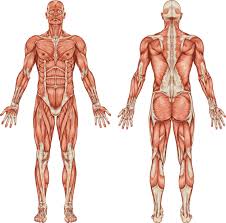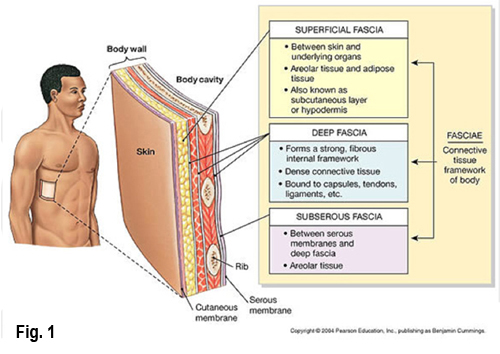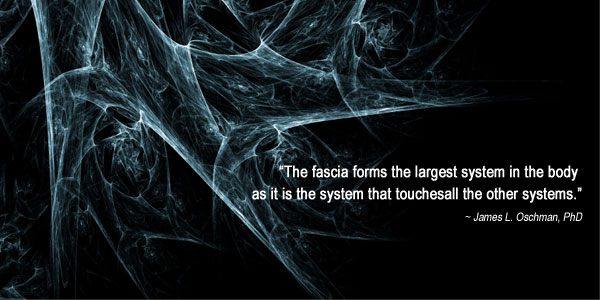Fascia. Things to know before you begin…
Imagine your looking at a photo of the human body. You’re looking at the sort of photo that shows all the muscles. And of course we see only what we see….muscles.

Now take that gaze a layer deeper. Not only surrounding our muscles, but classified with three layers (superficial, deep fascia,visceral –also called subserous fascia), you will find the connective tissues in the body called fascia. 
It’s the shiny covering over your meat before you cook it. Your muscles are surrounded by this tissue. It is a continuous, uninterrupted tissue throughout our body.1 So, you can understand how fascial tightness in one area can affect the amount of quality movement from a nearby area.
The underlying muscles need room to expand through the day. If the fascia is not flexible enough, muscle and joint problems will arise. Compartment syndromes, typically in the lower leg and forearm, can develop as pressure within the muscles increases. The area feels very tight with pain and often poor motor control of that limb.
Other areas of the body where fascia is too tight often presents with reduced flexibility, early muscle fatigue, muscle strain, inflammation and pain as the muscles and joint are under greater than usual stress, contributing to incorrect posture and movement patterns.
When the fascia is healthy, it allows normal amounts of movement from our muscles and joints. When this tissue becomes dysfunctional, meaning it does not move well, it can be the culprit for restricted or stiff movement and pain in and around joints. Overtime, this added stress and poor mechanics contributes to the declining health of the joint(s). No matter if our lives are sedentary or active.
You may have heard people refer to the ‘knots’ in their muscles. They’re referring to the misalignment of their fascial tissue. This occurs from poor posture, poor movement patterns, injury or trauma, surgery, tension and frequent high impact forces such as heel pounding walking, athletes on turf or concrete and laborers using impact tools.
Most all of us have areas of unhealthy fascia as we live our lives working, playing and competing. If you sit for most of your working day, very likely the muscles and joints from your hips and below will be stiff, sooner or later. Any movement you need from these areas after your work day will very likely be stiffer than it should. This sets the stage for increasing movement problems, increasing stiffness, gradually increasing strain and pain, and possibly injury when you want to go and be active, be it in the garden, playing tennis or golf or running.

One last piece of information on fascia. With recent fascial research, it turns out fascia is one of our richest sensory organs with between six to ten times higher quantity of sensory nerve receptors than the muscles.4 In fact, it is possible fascia may be equal or superior to the retina, which has so far been considered the richest human sensory organ.5 (Robert Schleip et al., Fascia: The Tensional Network of the Human Body (Elsevier, 2012), 77.)
